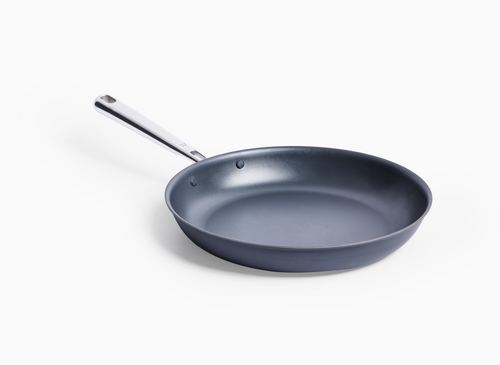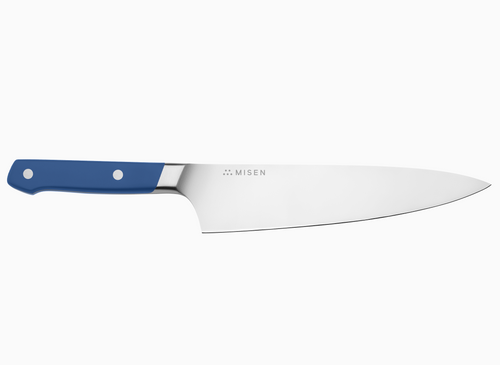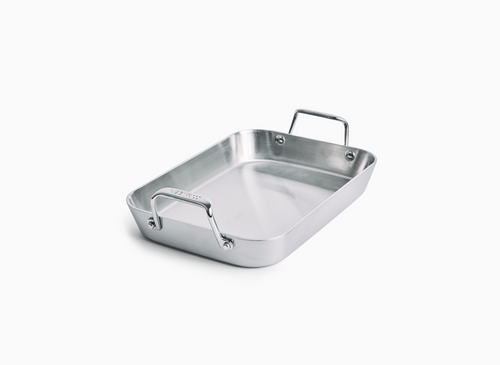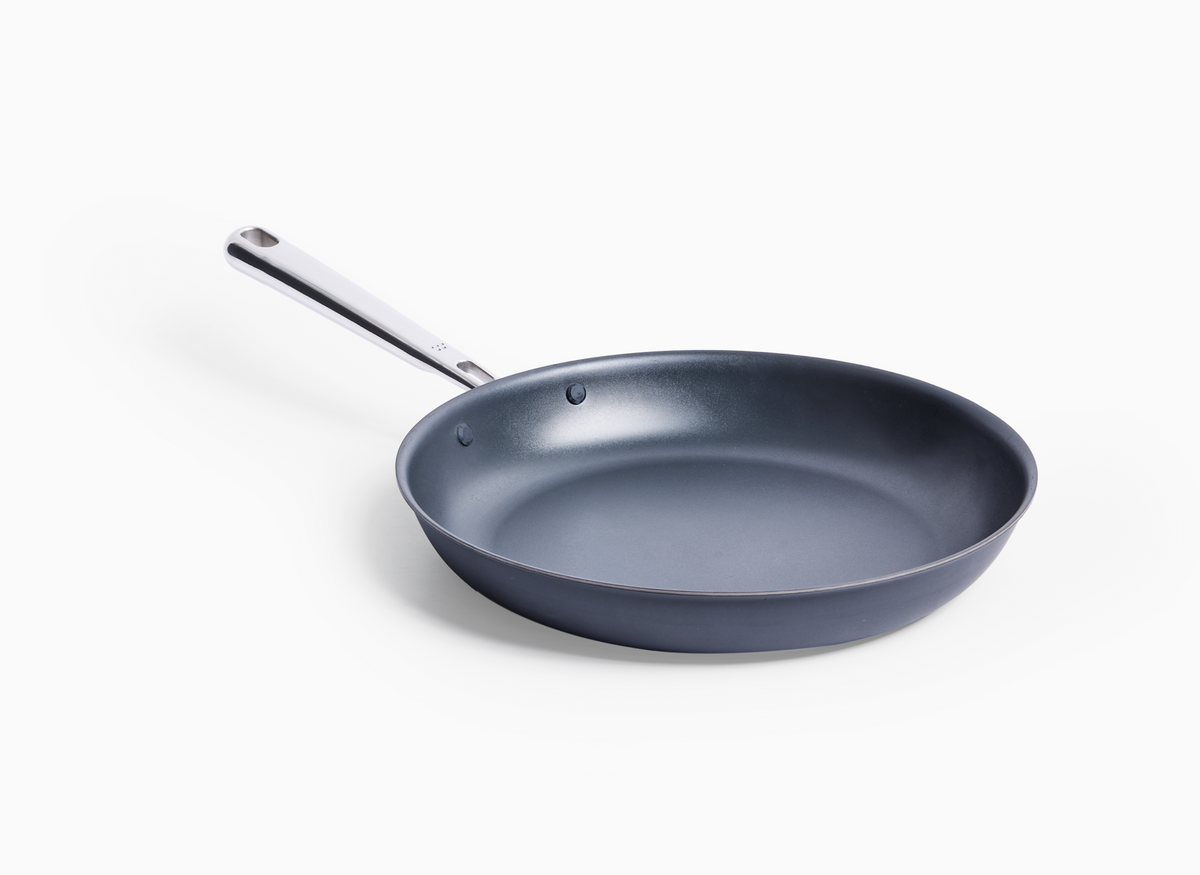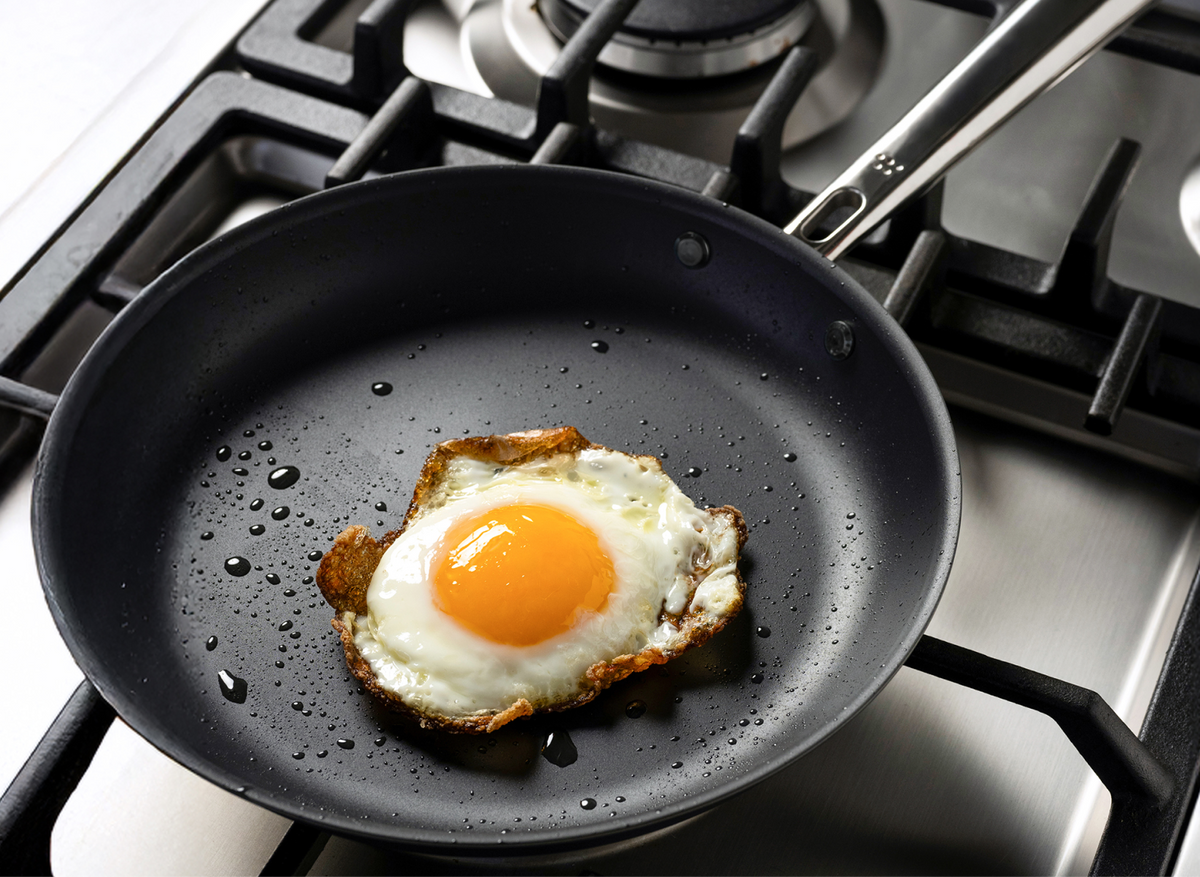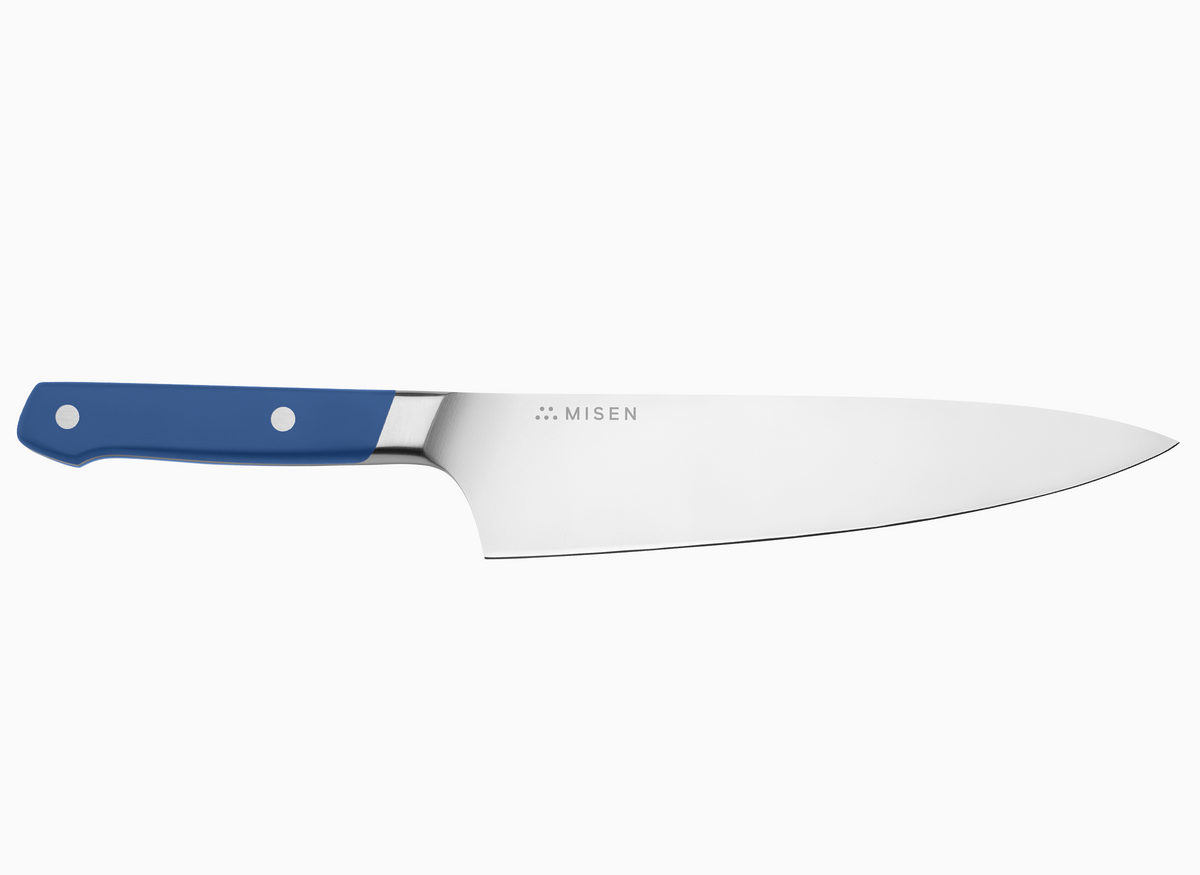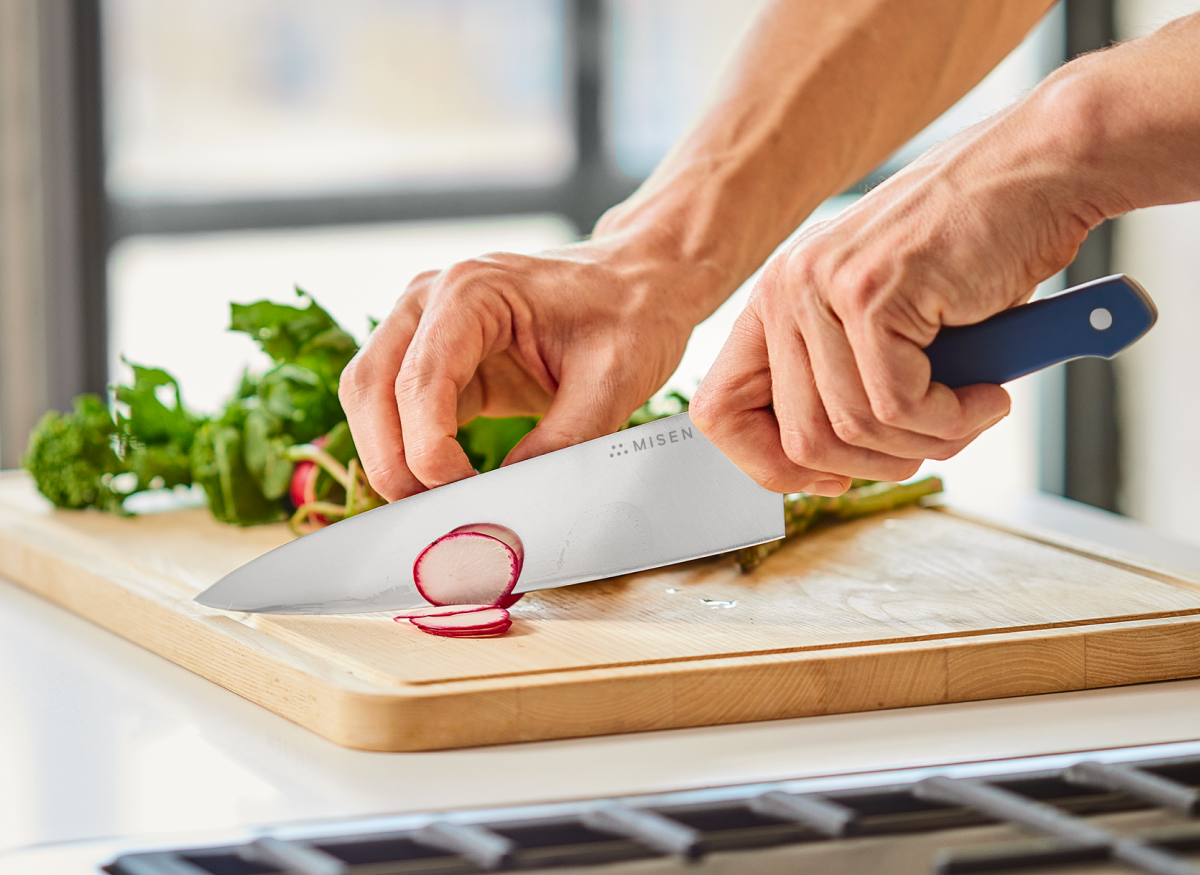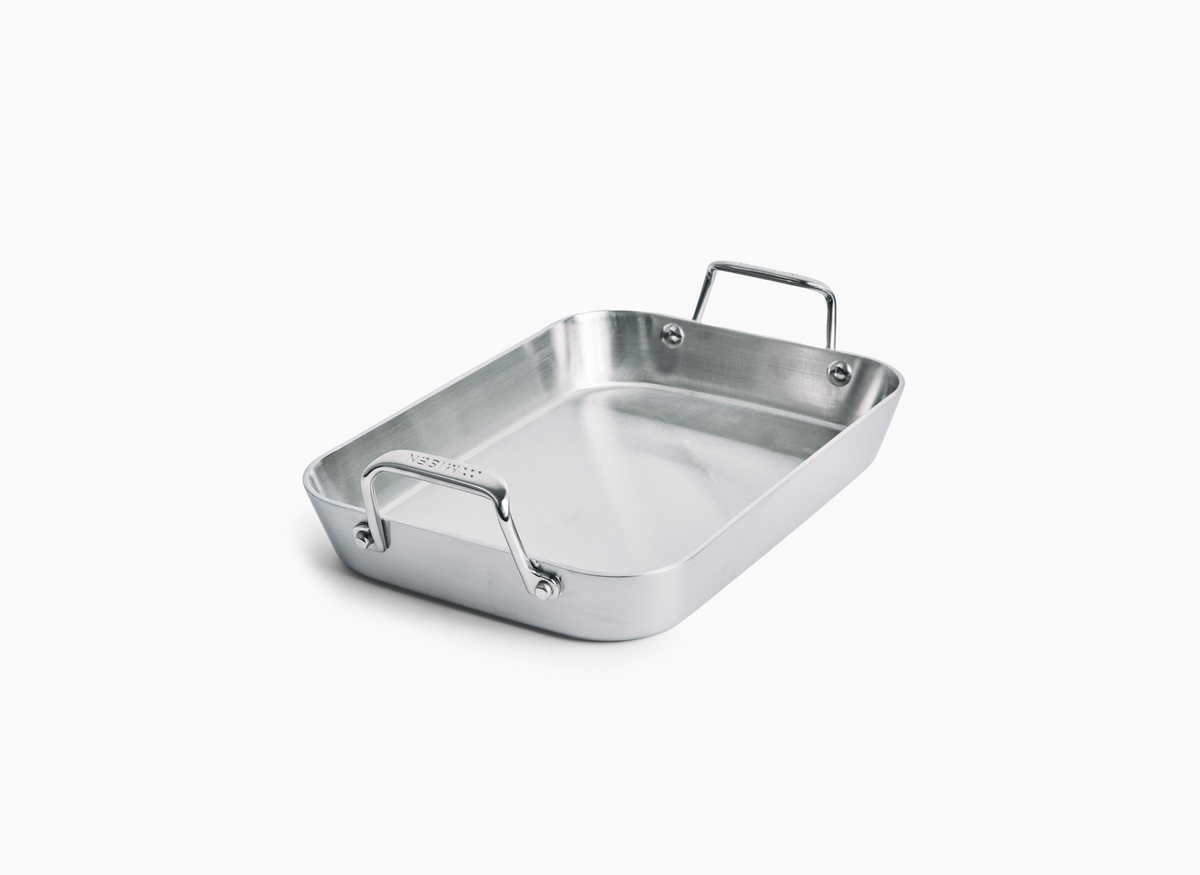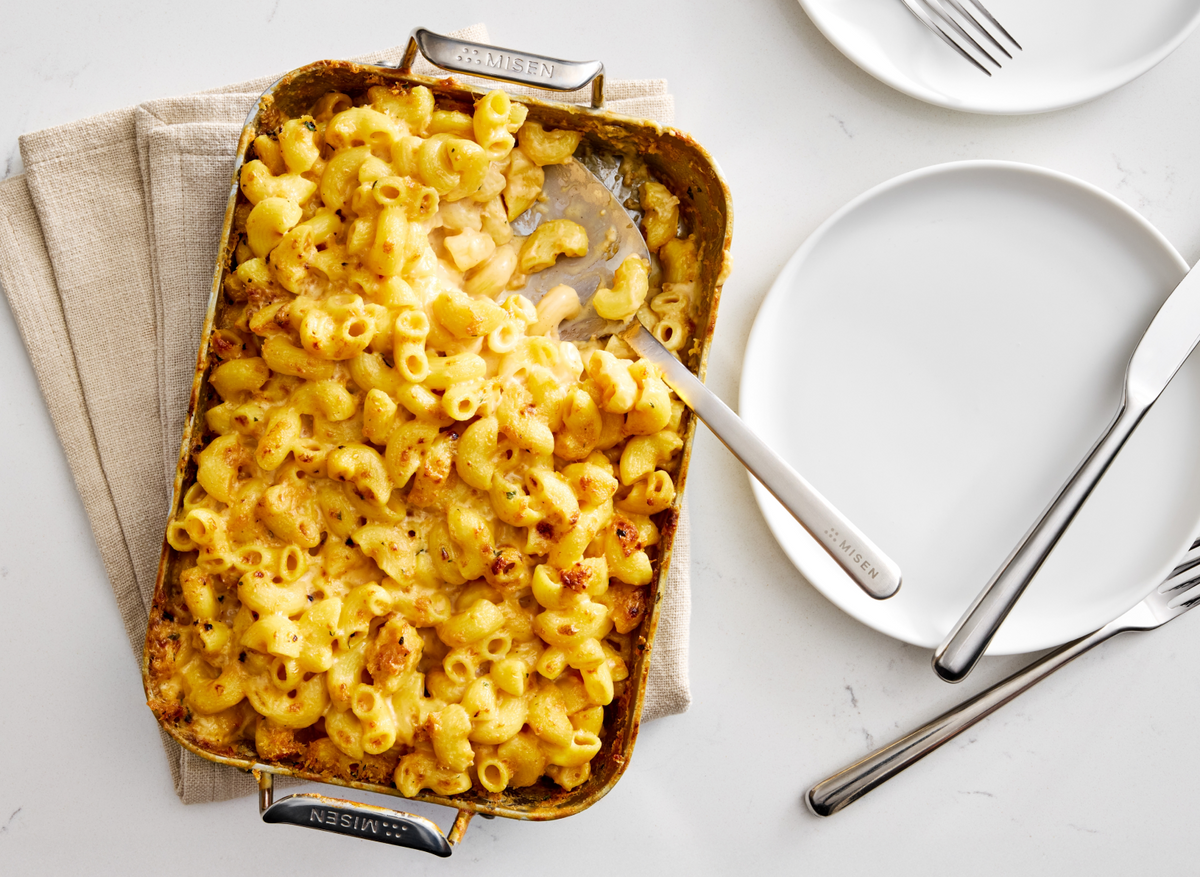How to Chiffonade Lettuce Perfectly for Crisp, Even Shreds
How to Chiffonade Lettuce Perfectly for Crisp, Even Shreds
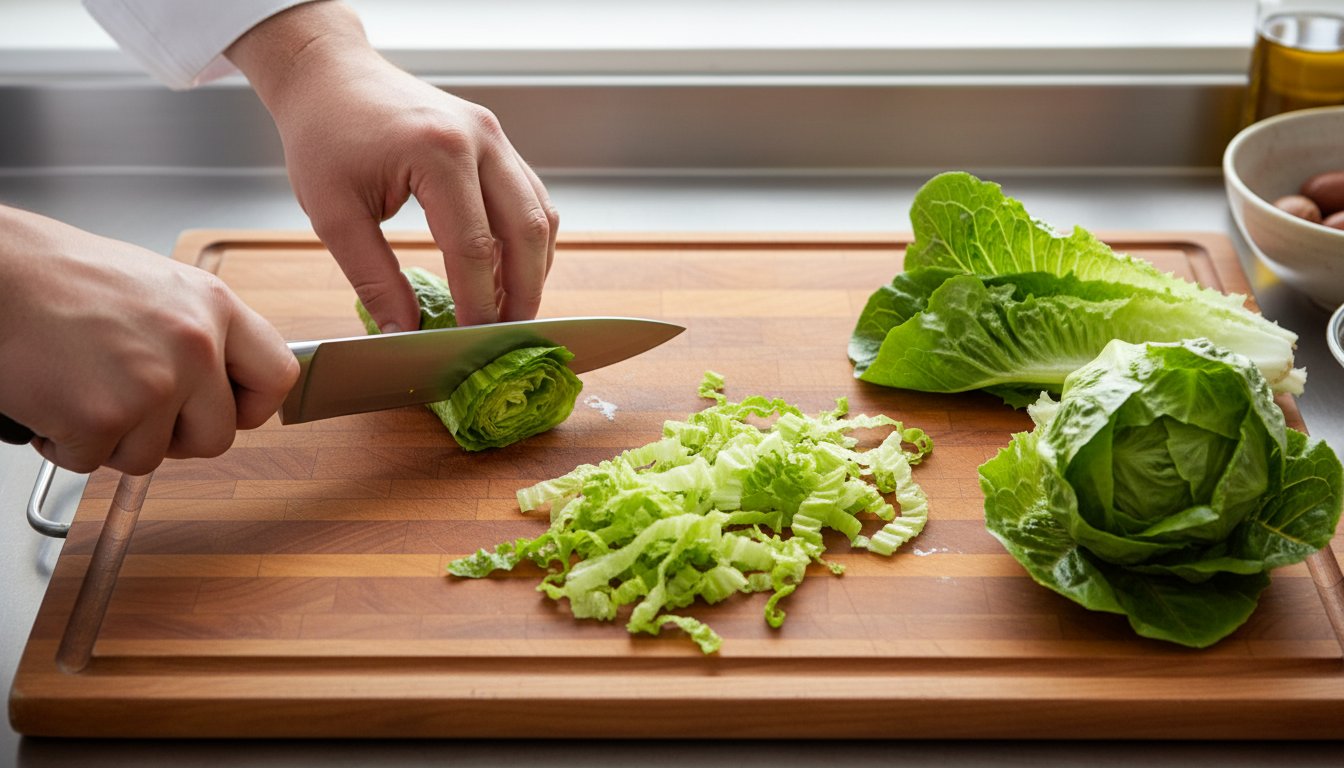
Mastering the perfect temperature for searing in stainless steel pans is essential for achieving restaurant-quality results at home. This comprehensive guide explores the science of heat conduction, the Leidenfrost effect, and practical testing methods to ensure your pan reaches the ideal temperature. Learn specific temperature ranges for different foods, troubleshooting tips for common issues, and expert techniques to prevent sticking and achieve the perfect sear every time.
Understanding the Chiffonade Technique for Lettuce
Creating precise 1/16 to 1/8 inch ribbons transforms ordinary lettuce into elegant strips that release maximum flavor throughout your dish.
The French Connection: History and Culinary Significance of 'Chiffonade'
Chiffonade translates to 'little ribbons' in French - and that's exactly what you'll create with this technique [1]. By stacking, rolling, and slicing leafy ingredients, you transform ordinary lettuce into elegant, uniform strips [1]. Originally developed for greens like spinach and Swiss chard, chiffonade works wonderfully with lettuce and herbs like basil too [1]. The key is creating those precise 1/16 to 1/8 inch ribbons that not only look professional but also release more flavor throughout your dish [2]. It's a simple technique that brings a touch of French culinary tradition to your home kitchen [3].
Chiffonade vs. Other Cutting Methods: When and Why to Use This Technique
So why choose chiffonade over other cutting methods? Unlike dicing (which creates cubes) or julienne (which makes matchsticks), chiffonade produces those signature long, delicate ribbons that elevate any dish [4]. This technique shines when you're working with leafy greens and herbs - the uniform strips ensure even flavor distribution and cooking [5]. While rough chopping gets the job done quickly, it can't match chiffonade's precision. Those consistent ribbons don't just look elegant; they also prevent the bruising and discoloration you often get with rougher cuts [6]. It's the go-to method when both taste and presentation matter.
The Science Behind Perfect Shreds: How Chiffonade Enhances Texture and Flavor
Here's what makes chiffonade so effective: when you create those precise cuts, you're maximizing the surface area of each lettuce strip, which releases more flavor compounds into your dish [7]. The clean, perpendicular slicing prevents cell damage that causes bruising and browning - keeping your lettuce looking fresh and vibrant longer [7]. Those uniform ribbons also mean every bite has the same texture and flavor intensity. It's not just about looks (though the presentation is stunning) - it's about creating a better eating experience through thoughtful technique [7].
Visual Impact: Why Restaurant Chefs Rely on This Method
Professional chefs have good reason to love chiffonade - it's the secret to making simple lettuce look restaurant-worthy. Those uniform ribbons create visual height and texture on the plate, turning a basic salad into something special [8]. The technique delivers on both form and function: while those delicate strips look elegant piled high, they're also releasing maximum flavor with every bite [9]. Plus, during a busy dinner service, chiffonade lettuce can be prepped ahead and stays presentation-ready. With the right knife - like a sharp, well-balanced chef's knife - you can achieve these professional results at home. It's proof that sometimes the simplest techniques make the biggest impact on your plate.
Selecting the Ideal Lettuce Varieties for Chiffonade
Broad-leaved varieties like romaine and butter lettuce create the most uniform ribbons when you match your cutting width to the leaf's structure.
Best Performers: Lettuce Types That Chiffonade Beautifully
Certain lettuce varieties excel at producing clean, consistent chiffonade cuts due to their leaf structure and texture. Broad-leaved varieties like romaine, butter lettuce, and red leaf lettuce create uniform strips that enhance salad presentation while maintaining their structure. When you're selecting lettuce, look for pliable leaves that stack and roll without breaking - these characteristics make all the difference in achieving those perfect ribbons.
Here's a practical tip: tender greens benefit from thinner cuts around 1/8 inch wide, while heartier varieties can handle slightly wider 1/4 inch strips. Match your cutting width to the lettuce's intended use - finer cuts work beautifully for delicate salads, while wider ribbons hold up better in cooked applications. Before you start stacking, remove any thick center ribs from your leaves. This simple step ensures even rolling and cutting, setting you up for success from the start [11].
Romaine vs. Butterhead vs. Leaf Lettuce: Comparing Results
Each lettuce variety responds differently to the chiffonade technique based on its unique leaf structure and texture. Romaine lettuce creates long, sturdy ribbons that maintain their crispness, making them ideal for salads and cooked applications where texture retention matters. With a quality sharp chef's knife, these robust leaves slice cleanly into perfect strips that hold their shape beautifully.
Butterhead varieties like Bibb produce delicate, velvety strips that add an almost luxurious mouthfeel to dishes, though they require gentler handling during cutting to prevent bruising [12]. Leaf lettuces offer versatility - their pliable leaves stack and roll easily while producing consistent ribbons that distribute evenly throughout dishes [12].
Here's how to get the best results from each variety: adjust your cutting width based on the leaf's structure. Tender butterhead leaves shine with thinner 1/8-inch strips, while heartier romaine can handle slightly wider 1/4-inch cuts. The key is adapting your technique - use looser rolls for delicate butterhead lettuce and tighter rolls for sturdy romaine. This attention to detail ensures clean, uniform cuts every time [12].
Freshness Factors: Choosing and Storing Lettuce for Optimal Cutting
Proper storage starts with selecting lettuce at peak freshness. Look for unblemished leaves without brown spots or wilting edges - quality ingredients lead to quality results [14]. Getting your lettuce storage right makes a huge difference in your chiffonade success. The secret? Finding that sweet spot between moisture and airflow - too much water leads to spoilage while too little causes wilting [15].
For whole heads, try this game-changing trick: wrap them individually in aluminum foil. The foil provides just enough permeability for the lettuce to breathe without drying out. When stored this way and wrapped tightly after each use, your lettuce can stay crisp for up to 30 days [16].
If you buy pre-cut lettuce in clamshell containers, here's a simple hack: place a paper towel on top of the greens and store the container upside down in your refrigerator. The paper towel absorbs excess moisture that would otherwise cause sogginess, while the inverted position prevents wet leaves from contaminating others. Just remember to change the paper towel when it becomes damp [16]. And don't worry if your lettuce looks a bit limp - a 20-30 minute ice water bath can work wonders, rehydrating the leaves and restoring that perfect crispness for cutting [15].
Specialty Greens That Benefit from the Chiffonade Treatment
Beyond common lettuce varieties, several specialty greens excel with the chiffonade technique. Flat-leaf herbs like basil, mint, and sage create striking ribbons that release more aromatic compounds when cut into fine strips compared to whole leaves [17]. Swiss chard and spinach benefit particularly from chiffonade cutting, as the technique transforms these hearty greens into elegant, easy-to-eat ribbons while breaking down tough fibers to improve tenderness [18]. When working with delicate herbs like basil that bruise easily, use quick, decisive knife strokes and handle the rolled leaves gently to minimize damage [17]. For optimal results across different greens, adjust the width of cuts based on the leaf's structure - thinner 1/8-inch strips work best for tender herbs and delicate greens, while heartier varieties can handle slightly wider 1/4-inch cuts [17].
Essential Tools and Preparation
A sharp chef's knife and proper cutting board setup are the foundation for achieving professional chiffonade cuts at home.
Knife Selection: Finding the Perfect Blade for Lettuce Chiffonade
A sharp, well-balanced chef's knife makes all the difference for clean chiffonade cuts. Look for a blade that feels comfortable in your hand - not too heavy, but substantial enough for precise control. A quality chef's knife gives you better reach and control compared to a paring knife, especially when working with larger lettuce leaves.
The key is keeping your knife properly maintained. Regular washing and drying keeps the blade in top condition for consistent cuts. Your knife should glide through leaves without requiring pressure - if you're pushing down hard, it's time to sharpen. Remember, a sharp blade does the work for you, preserving those delicate lettuce leaves instead of crushing them.
Cutting Surface Matters: Board Selection and Preparation
Your cutting board choice really matters for quality chiffonade cuts. Wood or bamboo boards give you the best of both worlds - they're gentle on your knife edge while providing enough grip to keep leaves from sliding around. You'll want at least 12 inches of workspace to comfortably stack and roll your lettuce.
Before you start, make sure your board is clean and completely dry - wet surfaces make precise cutting nearly impossible. Set yourself up for success by placing a damp kitchen towel under your board to keep it from shifting. This simple trick gives you the stability you need for those delicate cuts. If you're prepping both herbs and lettuce, grab a second board to keep flavors separate and maintain ideal cutting conditions for each ingredient.
Supporting Cast: Additional Tools That Make Chiffonade Easier
A few extra tools can make your chiffonade prep even easier. Kitchen scissors work great for herbs - just snip them directly over your dish for instant garnish without the cleanup. But here's the thing: nothing beats a sharp knife, so keep a sharpener handy. Dull blades tear leaves instead of cutting cleanly, ruining that beautiful ribbon effect.
If you're working with lots of lettuce, a salad spinner is your best friend. Completely dry leaves are crucial for clean cuts - any moisture makes the knife slip and bruises those delicate leaves. For bigger prep jobs, herb strippers speed up the process by quickly removing leaves from stems. Just remember what we mentioned earlier about using separate boards for different ingredients to keep flavors where they belong.
Setting Up Your Workspace for Safety and Efficiency
Setting up your workspace properly makes chiffonade cutting safer and more efficient. Start with your cutting board at a comfortable height where you can see what you're doing - good lighting directly over your work surface is key for spotting leaf veins and getting consistent cuts.
Keep it simple: just your knife, board, and prepped lettuce within reach. Clear away any clutter that might get in your way. As mentioned earlier, that damp towel under your board prevents dangerous sliding.
Your knife grip matters too. For most people, the pinch grip works best - hold the blade between your thumb and forefinger just above the handle, wrapping your other fingers around the grip. This gives you the control you need for those precise ribbon cuts. Some prefer the handshake grip for more power, but the pinch grip typically offers better precision for delicate work like chiffonade.
Master Technique: Step-by-Step Lettuce Chiffonade
The water droplet test reveals when your lettuce is properly dried - drops should bead up and roll off without leaving moisture behind.
Prep Work: Properly Cleaning and Drying Lettuce Leaves
Start your chiffonade prep by washing lettuce the smart way. Fill your salad spinner basin with cold water and place the lettuce in the basket - you'll use significantly less water than filling an entire sink while still getting every leaf clean [27]. Let the leaves soak for 10-15 minutes, giving them a gentle swish periodically to loosen any grit [27]. If you're working with particularly dirty leaves, don't hesitate to wash them twice.
Here's where proper drying makes all the difference. Your salad spinner is the hero here - it takes just 90 seconds compared to an hour for air drying on paper towels [27]. Spin the leaves in 30-second bursts, emptying the water between spins until no more moisture collects [27]. The key? Don't overcrowd the basket - give your leaves room to dry evenly. Once you've got clean, dry lettuce, you're set up for those perfect, precise cuts that make chiffonade so special [28].
The Stack and Roll Method: Creating the Perfect Cylinder
Now you're ready for the magic - creating that perfect cylinder. Stack 3-4 large lettuce leaves or 4-6 smaller ones on your cutting board [22]. Roll them tightly, tucking in both ends to create a firm, cigar-like shape [22]. This simple step transforms delicate leaves into something you can actually cut evenly [22].
Here's a pro tip: adjust your rolling technique based on what you're cutting. Working with delicate butterhead? Keep that roll a bit looser. Got sturdy romaine? You can roll it tighter for cleaner cuts [29]. You want the cylinder compact enough to hold its shape but not so tight that you're crushing the leaves [18]. Position your rolled cylinder perpendicular to your knife blade - you're now perfectly set up for those signature ribbons [22].
Precision Cutting: Hand Position, Angle, and Slicing Motion
Here's where your knife skills shine. Hold that lettuce roll between your thumb and little finger, with your other fingers on top for control [30]. Use your middle finger's nail as a guide - it acts as a buffer between the blade and your fingers [30].
Position your knife at a 45-degree angle for the smoothest cuts [31]. Make consistent slices about 1/8 inch wide with smooth, even strokes - no sawing allowed [31]. A sharp chef's knife should glide through the roll effortlessly, creating those perfect ribbons that make chiffonade so distinctive.
Finishing Touches: Separating and Fluffing for Beautiful Results
Time for the finishing touches. Gently shake those strips apart with your fingers to separate them into beautiful individual ribbons [32]. Want maximum visual impact? Arrange your lettuce in loose, airy piles instead of flat spreads - you'll create gorgeous height and dimension on the plate [32].
Mix things up when working with multiple ingredients. Try pairing fine herb ribbons with wider lettuce strips for textural contrast that catches the eye [32]. Your separated strips should distribute evenly throughout the dish while keeping their delicate structure intact [32].
Here's a plating secret: arrange your chiffonade in odd-numbered groupings for the best visual balance [32]. And remember - handle those ribbons gently, especially if you're working with tender butter lettuce that bruises at the slightest touch [33].
Troubleshooting and Perfecting Your Chiffonade
A sharp knife and proper technique prevent bruising - let your blade glide through leaves rather than forcing the cut.
Common Mistakes That Lead to Uneven or Bruised Shreds
Let's address the most common mistakes that can derail your chiffonade efforts. A dull knife is your biggest enemy here - it crushes delicate lettuce leaves instead of slicing cleanly through them [34]. Keep your knives sharp with regular maintenance to ensure those perfect ribbons every time. Rolling too loosely or unevenly creates inconsistent strips that wilt at different rates, making your dish look uneven [34]. While it might seem convenient, skip the food processor entirely - it bruises leaves and creates ragged pieces that lack the refined look of proper chiffonade [34]. When stacking leaves, align them neatly and work with just 3-4 at a time for better control [34]. Remember: a sharp knife and gentle technique preserve both texture and appearance [34].
Achieving Consistency: Tips for Uniform Thickness and Width
Creating uniform ribbons comes down to a few key techniques. Select your best leaves and stack them largest to smallest with glossy sides down - this foundation sets you up for success [35]. Roll into a tight cylinder, tucking the ends to prevent unraveling while maintaining even pressure throughout [35]. As covered in our cutting technique section, maintain that 45-degree angle and let your sharp knife glide through rather than forcing it [36]. Quick, confident strokes work best for delicate lettuce to prevent bruising [35]. Match your cut width to your intended use - go thinner (about 1/8 inch) for fresh salads and slightly wider (up to 1/4 inch) when you'll be cooking the greens [35].
Preventing Browning and Maintaining Maximum Crispness
Your beautifully cut lettuce ribbons deserve proper storage to maintain their crispness. Here's the key: lettuce needs both air circulation and light moisture - not too much of either [15]. For storing chiffonade cuts, try this simple trick: place a paper towel on top of your greens in a container, then flip it upside down in the fridge. The towel absorbs excess moisture while keeping everything fresh [37]. Got limp ribbons? Don't toss them! A quick 20-30 minute ice water bath brings them right back to life [15]. Planning ahead? Whole lettuce heads wrapped in aluminum foil stay crisp for up to 30 days - just rewrap tightly after each use [16].
Practice Makes Perfect: Skill-Building Exercises for Lettuce Chiffonade
Ready to perfect your technique? Let's build those skills step by step. First, nail that knife grip - pinch the blade between your thumb and index finger just above the handle, wrapping your other fingers around for control [38]. Skip the temptation to extend your index finger along the spine - it actually reduces your precision. Form a protective claw with your guide hand, tucking your thumb safely behind while your knuckles guide the blade [38]. Pro tip: place a damp towel under your cutting board to keep it steady, and adjust your workspace height so you can see exactly what you're doing [25]. Start practicing with sturdy romaine leaves before tackling delicate herbs. Remember the fundamentals from our cutting technique section - maintain that 45-degree angle and let your sharp knife do the work [38]. With practice, you'll consistently achieve those perfect ribbon widths every time [25].
Creative Culinary Applications for Chiffonade Lettuce
Chiffonade lettuce ribbons elevate everything from simple salads to gourmet presentations by creating perfect texture and flavor distribution.
Beyond Basic Salads: Elevated Dishes Featuring Chiffonade Lettuce
You've mastered the chiffonade technique - now let's explore how to use those beautiful ribbons beyond everyday salads. This cutting method transforms simple lettuce into an elegant component that works in everything from gourmet preparations to weeknight dinners. Mixed lettuce chiffonade pairs perfectly with bold dressings like gorgonzola-herb combinations, where the ribbons act as delicate vehicles for rich flavors [39].
For make-ahead meals, try combining chiffonade kale with Brussels sprouts. Unlike delicate greens, this hearty combination holds up beautifully without wilting - perfect for holiday entertaining or meal prep [40]. The fine cutting softens kale's naturally tough texture while preserving its fresh crunch. You'll find chiffonade lettuce works equally well in classic French dishes or modern interpretations like plant-based Caesar salads topped with crispy chickpea croutons [41]. The key is matching your ribbon width to your application - as we covered earlier, tender greens need thinner cuts while heartier varieties can handle wider strips.
Texture Contrasts: Pairing Crisp Shreds with Other Ingredients
Think of chiffonade lettuce as your secret weapon for creating memorable texture contrasts. Those delicate ribbons you've learned to cut bring something special to every dish - they stay crisp enough to provide structure yet are fine enough to blend seamlessly with other ingredients.
Try pairing your chiffonade lettuce with crunchy elements like toasted nuts or crispy vegetables in grain bowls. The ribbons nestle perfectly between quinoa or farro, distributing evenly so you get greens in every bite [22]. For creamy dishes, use chiffonade lettuce as a fresh counterpoint - float those ribbons on top of butternut squash soup or fold them into a rich risotto just before serving. The contrast between the cool, crisp lettuce and warm, creamy base creates an exciting sensory experience that elevates simple dishes into restaurant-worthy presentations.
Dressing Success: Sauces and Vinaigrettes That Cling Perfectly to Shredded Lettuce
The perfect vinaigrette starts with understanding the classic 1:3 ratio of acid to oil, which creates an emulsified dressing that clings beautifully to chiffonade lettuce [42]. For tender greens, use a mellower 3:4 acid-to-oil ratio, while heartier ingredients benefit from a sharper 1:1 blend [43]. Adding Dijon mustard helps bind the ingredients together and maintain emulsion, while shallots provide depth without overpowering the greens [42]. For maximum coating potential, test your vinaigrette by dipping a lettuce leaf to ensure the flavors complement your specific greens [42]. Julia Child's timeless technique emphasizes the importance of gradually streaming in oil while whisking to create a properly emulsified dressing that appears slightly thickened and pale ochre in color, rather than separated [44]. This careful emulsion process ensures the vinaigrette clings evenly to each delicate ribbon of lettuce instead of pooling at the bottom of the bowl.
Presentation Techniques: Making Chiffonade Lettuce the Star of Your Plate
Ready to make your chiffonade lettuce the star of the plate? Start by thinking of your plate as a canvas and those ribbons as your paint. Instead of spreading lettuce flat across the plate, build height by creating loose, airy piles - this simple change instantly makes your dish more restaurant-worthy [9].
Use the photographer's rule of thirds: mentally divide your plate into a grid and place your lettuce ribbons at the intersecting points rather than dead center [45]. This creates visual interest and draws the eye naturally across the plate. Mix ribbon widths for contrast - pair delicate herb chiffonade with wider lettuce strips to add depth and texture to your presentation [9].
Remember that negative space is your friend. Don't feel compelled to fill every inch of the plate - strategic empty spaces make your chiffonade lettuce stand out even more [46]. Choose your plates wisely too: white plates make green lettuce pop, while dark plates create dramatic contrast [45]. Before serving, step back and view your creation from all angles, then give the rim a quick wipe with a damp cloth for that professional finish [46]. With your sharp chef's knife skills and these presentation techniques, you'll create dishes that look as amazing as they taste.
- Chiffonade creates precise 1/16 to 1/8 inch ribbons that maximize flavor release and create elegant presentations
- Broad-leaved varieties like romaine and butter lettuce work best - match cutting width to leaf structure
- A sharp chef's knife is essential - the blade should glide through leaves without pressure
- Proper washing and thorough drying with a salad spinner ensures clean, precise cuts
- Stack 3-4 leaves, roll tightly like a cigar, and cut at a 45-degree angle for best results
- Store chiffonade lettuce with a paper towel in an inverted container to maintain crispness
- The technique works beautifully for herbs, spinach, and Swiss chard beyond just lettuce
- https://en.wikipedia.org/wiki/Chiffonade
- https://misen.com/blogs/news/chiffonade-cut-definition-master-the-art-of-fine-slicing?srsltid=AfmBOoqvN10E07nna8KM2O5_GidfyyK9S7gNVHarnLLnqABDC65jr44F
- https://www.ecoleducasse.com/en/blog/french-cooking-techniques
- https://whatsfordinner.com/kitchen-tips/culinary-cutting-terms-images/
- https://www.bobsredmill.com/articles/what-are-the-different-types-of-cutting-styles-in-cooking
- https://www.webstaurantstore.com/article/796/types-of-knife-cuts.html?srsltid=AfmBOooqEAzTocbL65rf8R6ZyAUt3ezB-jcb1zAZBtf2jLl2ssC2X6jy
- https://www.newswire.com/news/top-damascus-chef-knife-of-2025-shinzo-blade-review-reveals-why-this-22608023
- https://misen.com/blogs/news/chiffonade-cut-definition-master-the-art-of-fine-slicing?srsltid=AfmBOopEcfkubjYDgsc56eVpsmb6IJIuxXCBUi3eHyBTyMGaJbpipQkd
- https://www.theculinarypro.com/plate-presentations
- https://misen.com/blogs/news/chiffonade-cut-definition-master-the-art-of-fine-slicing?srsltid=AfmBOorqTm2RDqtqXGK1htM6IhMV7XnGKiHkeB3JYZoQD80TBcXs6mGm
- https://thepracticalkitchen.com/how-to-chiffonade-basil-and-other-leafy-greens/
- https://misen.com/blogs/news/chiffonade-cut-definition-master-the-art-of-fine-slicing?srsltid=AfmBOopJcUYAubCm-MH5E4FDi1Xiq6tV8iMWfxNiyg3_OdpC21d-0iPH
- https://migardener.com/blogs/blog/types-of-lettuce?srsltid=AfmBOopvMuLXtJ-vbkOSJJvRsAi6XNVvmrdmiZCxDYDcmf4iem4mOr4p
- https://misen.com/blogs/news/chiffonade-cut-definition-master-the-art-of-fine-slicing?srsltid=AfmBOophaLNOXMZZZauABFztxXmkDvttbGz4MQpCV5ir87nt5vbw14pI
- https://www.thespruceeats.com/store-lettuce-for-freshness-996048
- https://www.allrecipes.com/article/tiktok-storing-lettuce-hacks/
- https://misen.com/blogs/news/chiffonade-cut-definition-master-the-art-of-fine-slicing?srsltid=AfmBOoptTUPpdqy3ZJJ7enfnfIB8vW7j66oiQb0LxQ2jdeAi8eJYU0k8
- https://www.masterclass.com/articles/how-to-chiffonade
- https://misen.com/blogs/news/chiffonade-cut-definition-master-the-art-of-fine-slicing?srsltid=AfmBOopbVmmDgEyHSHfZvk2UP81334W972TjZWXLisyQi5qui0T99b4R
- https://misen.com/blogs/news/chiffonade-cut-definition-master-the-art-of-fine-slicing?srsltid=AfmBOor1ohScbiUyRrct69SFtlZZ3khdYOTlAkenRhwI8HGeg5UtvyM5
- https://www.bowlofdelicious.com/chiffonade/
- https://www.forksoverknives.com/how-tos/how-to-chiffonade/
- https://www.goodlifeeats.com/kitchen-tip-how-to-quickly-chiffonade-herbs/
- https://www.bhg.com/recipes/how-to/cooking-basics/chiffonade-know-how/
- https://www.forksoverknives.com/how-tos/knife-skills-cutting-technique/
- https://www.mealime.com/kitchen-essentials-list
- https://www.thekitchn.com/best-method-wash-dry-salad-greens-skills-showdown-23043949
- https://www.hitchcockfarms.com/blog/how-to-wash-prep-and-store-romaine-hearts
- https://themodernnonna.com/how-to-shred-lettuce/
- https://www.bbc.co.uk/food/techniques/chiffonade
- https://www.ice.edu/blog/how-chiffonade-chop-and-slice-different-herbs
- https://misen.com/blogs/news/chiffonade-cut-definition-master-the-art-of-fine-slicing?srsltid=AfmBOophq9z9tHLVX-lBBOiktbyt9MLSl51_mnkXTDxj6L5GjpXIc7Bm
- https://www.dalstrong.co.uk/blogs/chef-blog/how-to-shred-lettuce-like-an-expert
- https://brainly.com/question/61389086
- https://misen.com/blogs/news/chiffonade-cut-definition-master-the-art-of-fine-slicing?srsltid=AfmBOopxpHUyTc7rhBBkj8TApFrtyaVVBMCenKmZNKF1IMOX_M9qg_Qa
- https://thetinyfairy.com/how-to-cut-chiffonade/
- https://www.bakingoutsidethebox.com/crisp-lettuce-after-washing/
- https://forums.egullet.org/topic/25958-basic-knife-skills/
- https://www.epicurious.com/recipes/food/views/mixed-lettuce-chiffonade-with-gorgonzola-herb-dressing-104626
- https://www.spabettie.com/lemony-brussels-and-kale-chiffonade-salad/
- https://followyourheart.com/vegan-recipes/kale-caesar-chiffonade-salad-with-chickpea-croutons/
- https://cookingwithcocktailrings.com/the-best-simple-vinaigrette-recipe/
- https://www.loveandlemons.com/lemon-vinaigrette/
- https://www.eatingwell.com/julia-child-sauce-vinaigrette-8417430
- https://www.mitchellcooper.co.uk/blogs/the-art-of-food-presentation-food-presentation-ideas-and-tips.html
- https://www.restaurantware.com/blogs/food-presentation/how-to-plate-a-salad?srsltid=AfmBOoojLq2OEumddvGuvrgJ3VPelD-4_Db8lPYeR4xXPFfSQHXIoAy8
